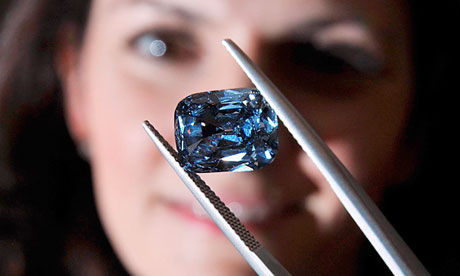
Natural fancy colored diamonds are very rare and expensive. Blue is one of the rarest and most desirable colors and is considered as a symbol of royalty. In the 13th century, France’s Louis IX recognized the beauty and timelessness of diamonds, and decreed that the gems could be owned only by the King. Had he been prescient, he might have known that the renowned French Blue Diamond would be stolen from the French Royal Treasury in the late 18th century, then re-cut to become what is today revered as the Hope Diamond.
The Hope Diamond is the world’s largest deep blue diamond, with a cut weight of 45.52 carats. Formed deep in the Earth’s core over a billion years ago, it was brought to the surface by a diamond-bearing volcanic shaft in Golconda, India. Since its discovery in the early 1600s, it has crossed oceans and continents, and passed through the hands of kings and commoners. It has a notorious past, having been sold, stolen, recovered and re-cut from the French Blue diamond once owned by the French Royal Treasury.
The diamond takes its name from Henry Philip Hope, who added the blue diamond to his collection sometime between the death of King George IV in 1830, and 1839. Historians claim that the King bought the diamond in the early 1800s, and that, following his death, it was sold to offset his debts. In 1958, Harry Winston, Inc. donated the Diamond the Smithsonian Institution, where it remains a compelling centerpiece of the National Museum of Natural History.
Natural blue diamonds are becoming g steadily easier to find due to mining in new areas. These diamonds are formed when traces of ‘boron’ are present during the formation of diamonds.. Engagement rings with blue diamonds have gained increased popularity and are currently in vogue. This is partly due to the rarity of blue diamond and its very high price compared to colorless diamonds which means a good investment and symbolizes status!


